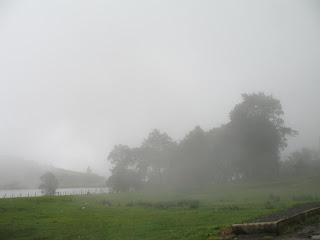Galle, fourth largest city/town (pop 91,000), 119 km south of Colombo was our next destination before arriving back in Colombo. Located on the south western end of the island, Galle has been an important ancient seaport of Tarshish, from which King Solomon drew ivory, peacocks and other valuables. Certainly, cinnamon was exported from Sri Lanka as early as 1400 BC and the root of the word itself is Hebrew, so Galle may have been the main entrepot of the island for the spice.
Images 1-3 External parameter walls of the port
Images 4-14 fort interior

Images 15-19 local traders 
Tuesday, September 04, 2007






Since our encounter with the first pair of tortoises in Turkey, this the second time we come across a tortoise while being on the road. This is a very rare site in Sri Lanka and only a few managing to survive cohesively with the expanding population, farming and pesticide and not to mentioned the road users.
Monday, September 03, 2007
 Trincomalee situated on the East coast will be the furthest east or north we will travel in this occasion in Sri Lanka. With a huge harbour, described by the British Admiral, Lord Nelson as being “the finest natural harbour in the world”, the town and the large neval bases have seen some action the last two to three decades as they have been targeted by the LTTE terrorist. And not to mention the 2004 Tsunami.
Trincomalee situated on the East coast will be the furthest east or north we will travel in this occasion in Sri Lanka. With a huge harbour, described by the British Admiral, Lord Nelson as being “the finest natural harbour in the world”, the town and the large neval bases have seen some action the last two to three decades as they have been targeted by the LTTE terrorist. And not to mention the 2004 Tsunami.
But today there is very little going for the town. Getting here from Anuradhapura means going through number of time consuming check points but the police manning the post have been friendly and helpful.
And once you get here, there is little or no accommodation as there is virtually no tourist, local or foreign. But the some of the countries best beaches are found in the east coast, to the north and south of Trincomalee


 The town centre is a hot and dusty ramshackle but lively. Here the ethnic mix of Singhalese Tamil And the Muslim is more or less even but not always harmonious but adds to the charm
The town centre is a hot and dusty ramshackle but lively. Here the ethnic mix of Singhalese Tamil And the Muslim is more or less even but not always harmonious but adds to the charmThe region is dotted with hot water springs that used to be popular with the locals but they are deserted these days (below). But we thought that we would drop by the most well known hot water springs and healing baths at Kanniya , again no one here except the army personal maning the nearest check points.

 As we head back south towards thrill country, we came across some wild elephants grazing just of the main road.
As we head back south towards thrill country, we came across some wild elephants grazing just of the main road.




































